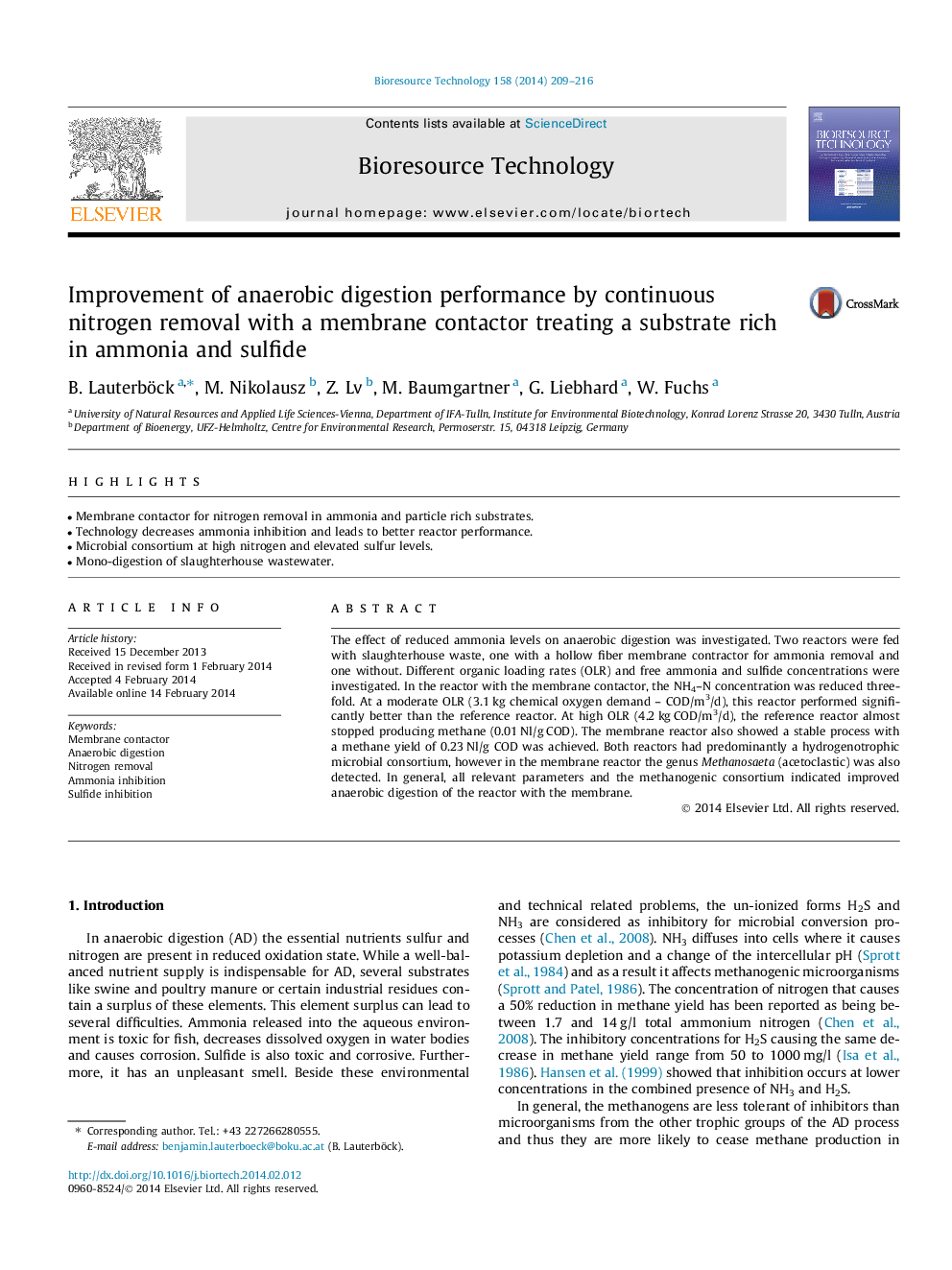| Article ID | Journal | Published Year | Pages | File Type |
|---|---|---|---|---|
| 680795 | Bioresource Technology | 2014 | 8 Pages |
•Membrane contactor for nitrogen removal in ammonia and particle rich substrates.•Technology decreases ammonia inhibition and leads to better reactor performance.•Microbial consortium at high nitrogen and elevated sulfur levels.•Mono-digestion of slaughterhouse wastewater.
The effect of reduced ammonia levels on anaerobic digestion was investigated. Two reactors were fed with slaughterhouse waste, one with a hollow fiber membrane contractor for ammonia removal and one without. Different organic loading rates (OLR) and free ammonia and sulfide concentrations were investigated. In the reactor with the membrane contactor, the NH4–N concentration was reduced threefold. At a moderate OLR (3.1 kg chemical oxygen demand – COD/m3/d), this reactor performed significantly better than the reference reactor. At high OLR (4.2 kg COD/m3/d), the reference reactor almost stopped producing methane (0.01 Nl/g COD). The membrane reactor also showed a stable process with a methane yield of 0.23 Nl/g COD was achieved. Both reactors had predominantly a hydrogenotrophic microbial consortium, however in the membrane reactor the genus Methanosaeta (acetoclastic) was also detected. In general, all relevant parameters and the methanogenic consortium indicated improved anaerobic digestion of the reactor with the membrane.
